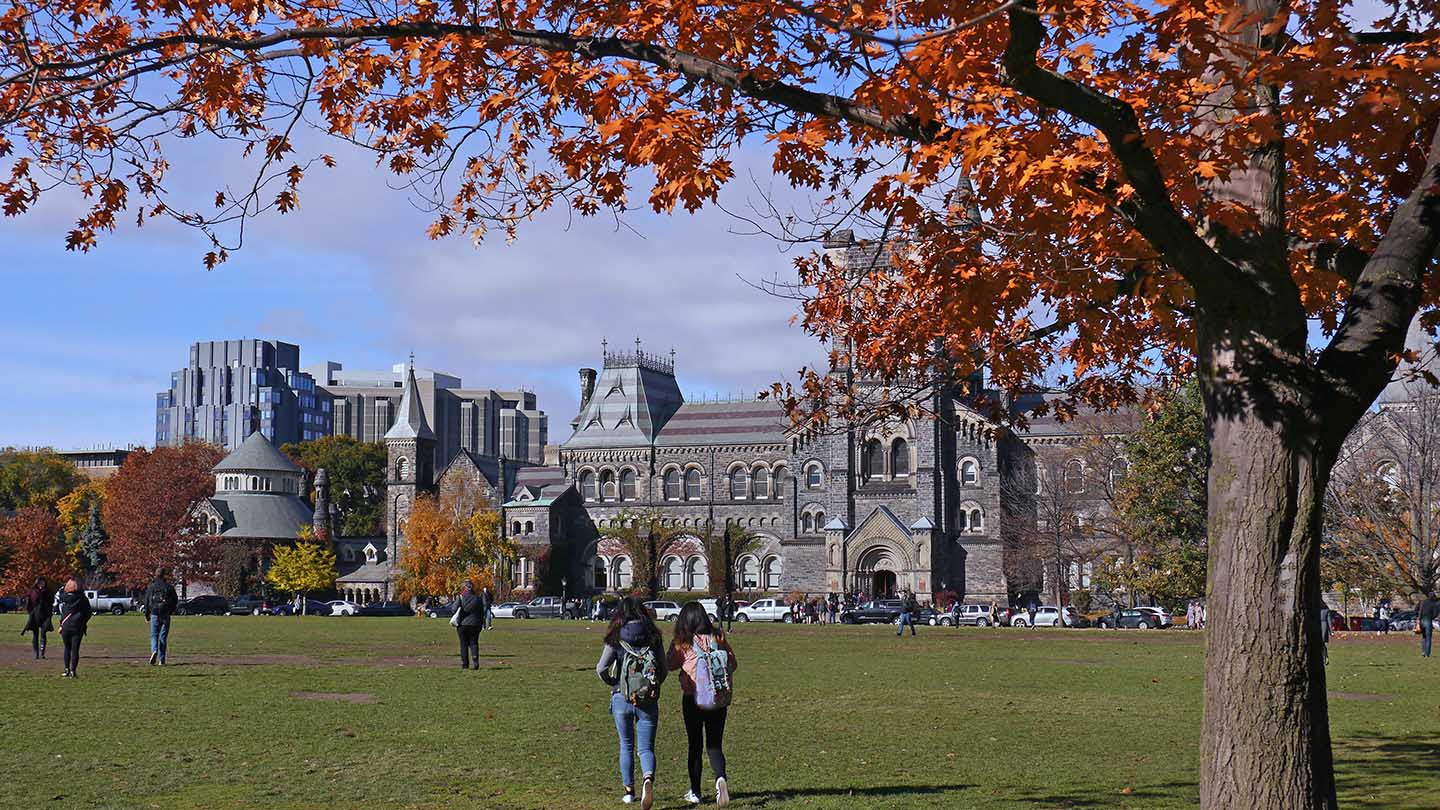11 federal student loan forgiveness and discharge programs

Senior Associate, JPMorgan Chase

If you belong to the cohort of Americans who collectively owe more than $1.6 trillion in student loan debt, you may wonder about the potential availability of student loan forgiveness options. From the Public Service Loan Forgiveness program to the Total and Permanent Disability Discharge Forgiveness program, options may be available to help eligible borrowers discharge some or all of their federal student debt.
Those who can access these programs may include but aren't limited to eligible teachers, government employees, nonprofit workers, medical professionals, and disabled workers. Those who've experienced forgery or deception, among other situations, may also be able to qualify for specific programs.
These programs also may come with a list of eligibility requirements – like needing to work several years before you're eligible for student loan forgiveness.
Let's break down what student loan forgiveness plans may be available for federal student loans and some of the eligibility requirements for these programs.
What's federal student loan forgiveness?
Federal student loan forgiveness is when the government discharges a part or the entirety of your student loan balance. Only federal student loans are eligible for these programs, not loans from private lenders like banks, credit unions, or fintech companies. That said, some private student loan borrowers may be eligible for forgiveness via their lender.
List of federal student loan forgiveness and discharge programs
Here's a list of current public student loan forgiveness programs you may qualify for.
1. Income-Driven Repayment (IDR) Forgiveness
An income-driven repayment plan determines your monthly payment amount based on income and family size. The newest IDR plan, the Saving on a Valuable Education (SAVE) plan, launched by the Biden-Harris Administration in August of 2023, forgives eligible low-balance borrowers.
The federal government may discharge your remaining balance if you originally borrowed $12,000 or less and have paid 120 payments on your loans. For every $1,000 you borrowed above that $12,000 amount, you'll have to make 12 more payments before you could see your loan balance forgiven. You can visit StudentAid.gov to check if you qualify, and if so, submit your application.
2. Teacher Loan Forgiveness
If you've taught at a low-income school or educational service agency for five consecutive years and meet other eligibility requirements, you may qualify for up to $17,500 in student loan forgiveness. You can check the Federal Student Aid office's Teacher Cancellation Low Income (TCLI) Directory to see if your elementary school, secondary school, or educational service agency qualifies.
Other requirements include that if you've taught for five consecutive years, at least one of those years must have been after the 1997-98 academic year. Another requirement is that you can't have an outstanding balance on your Direct Subsidized or Unsubsidized Loans or Federal Family Educational Loans (FFEL) as of October 1, 1998, or on the date you received a Direct Loan or FFEL after October 1, 1998.
You may want to keep in mind that you can't receive credit for both Teacher Loan Forgiveness and Public Service Loan Forgiveness during the same period.
3. Public Service Loan Forgiveness (PSLF)
The Federal Student Aid office reports that the government has discharged nearly $34 billion of student debt through its PSLF program. So, what's this program, and who may qualify?
If you're employed by a government or a nonprofit organization, you may be eligible for the PSLF program.
Eligibility requirements include that you're a non-defaulted federal Direct Loan borrower who's made 120 qualifying payments under an accepted repayment plan (consecutive and non-consecutive) on their loan and still has a remaining balance.
Another requirement is that you've made these 120 payments while working for an eligible employer at least 30 hours a week. These employers include but aren't limited to:
- U.S. based government organizations at any level (federal, state, local, or tribal), including the U.S. military
- Nonprofit organizations that are tax-exempt under Section 501(c)(3) of the Internal Revenue Code
- Other nonprofit organizations devote most full-time employees to providing certain qualifying public services.
Does your job qualify you for PSLF? You can use the Federal Student Aid office's PSLF Help Tool to see if your employer is already in the database. If your employer isn't in the database, it may still qualify, too.
PSLF for those in military service
Have you served in the military for ten years and still have student loans? You may be a candidate for PSLF. While your loan servicer may automatically notify you that you qualify, you can also contact your loan servicer directly to find out if you do.
PSLF for those in AmeriCorps
If you served in the AmeriCorps, a U.S. agency that connects Americans with volunteer work, you may be eligible to have your student loans forgiven. You must be a current AmeriCorps member or have served in 2007 or later to have your loans forgiven, because your service can count towards the ten years of public service needed to qualify for PSLF.
4. Total and Permanent Disability Discharge
If you're disabled, you may potentially qualify for federal student loan forgiveness. To qualify you must be considered a totally and permanently disabled person, which is defined as someone who can't engage in any "substantial gainful activity" because of a physical or mental condition.
You may consider completing a total and permanent disability discharge application and providing documentation from a physician, the U.S. Department of Veterans Affairs, or the Social Security Administration in order to qualify.
Other requirements include that you have a Direct Loan, FFEL, or a Federal Perkins Loan. You can apply for a total and permanent disability discharge here.
5. Closed School Loan Discharge
The federal government may discharge your loans if you have Direct Loans, FFEL loans, or Federal Perkins Loans and faced one of three circumstances:
- Being an enrolled student during the time your school closed.
- Being on a qualified leave of absence during the time your school closed.
- Experiencing your school closing 180 days (about six months) after you withdrew your enrollment.
Your servicer may automatically discharge your loans or send you an application to discharge your loans in the event of any of these scenarios, but you can also reach out directly should you experience one of these events. You may want to keep in mind that you will not be eligible for loan discharge if you've already completed your program at your closed school.
6. Borrower Defense Loan Discharge
You may qualify for Borrower Defense Loan Discharge, according to StudentAid.gov, if you can demonstrate that you "enrolled in a school or continued to attend a school based on misleading information from the school or other misconduct covered by the regulation, and suffered a detriment that is of a nature and degree warranting a full discharge of their applicable federal loans."
If you believe you may qualify, visit StudentAid.gov for more information on eligibility requirements.
If approved, the federal government may discharge your existing federal student loans, and some borrowers may also receive a refund for any previous payments made. This is based on the loan servicer's discretion.
7. False Certification Discharge
If you've ever been falsely certified by your high school as a graduate or had an unauthorized signature on a student loan application, you may qualify to have your loans discharged.
Another scenario that may put you in this loan forgiveness ring is if someone stole your identity and secured a loan in your name. Both Direct and FFEL loans are eligible for this type of discharge.
8. Unpaid Refund Discharge
Have you been in a situation where your school failed to complete your request for a tuition refund?
You may qualify for the federal government's partial refund loan discharge if so. The government will excuse the amount you're owed in a refund from your student loan balance.
9. Forgery Discharge
If an outside party, such as a person or an institution, issued a student loan in your name without your consent, you may be eligible to have your loans discharged. This applies to situations in which your signature was forged or your personal information was used without your consent.
This type of forgiveness applies to borrowers with Direct, FFEL, or Perkins loans. If you submit a request for this type of discharge and the U.S. Department of Education approves your request to discharge your loans, then not only will your remaining balance be changed to zero, but you'll receive a refund for what you've paid. You can complete the form here to make this request if you believe you're eligible.
10. Discharge Due to Death
If you or someone who took out student loans on your behalf passes away, the U.S. Department of Education will discharge these student loans if someone submits proof of death to the loan servicer. Proof of death usually includes an original death certificate or a certified copy of a death certificate.
If a parent took out a Parent Plus Loan, which allows parents of undergraduate students to secure loans to help their children pay for college, and they pass away, these loans may be able to be discharged due to this policy. Please note that this discharge doesn't apply to a co-signer who passes away.
11. Perkins Loan Cancellation and Discharge
If you're an eligible student loan borrower who received a Perkins loan as an undergraduate or graduate student, you may be eligible to have these loans forgiven.
Some requirements include working in education, law, nonprofits, the military, and healthcare. You must have started working in these fields on October 17, 1998, or later. If the U.S. Department of Education approves the cancellation of your loan, you may not see your loan canceled at once but in increments over five years.
The federal government may also excuse 100 percent of your Perkins loans if you've endured bankruptcy, school closure, or a service-connected disability, among other reasons.
Things to watch out for when applying for student loan forgiveness
While several federal student loan forgiveness options are available for qualified borrowers, you should ensure any options you pursue come from a credible source. You can confirm that a program is credible by visiting the U.S. Department of Education's website.
Here are some instances that may be indicative of student loan forgiveness scams according to the U.S. Department of Education that you may want to be wary of:
- Programs with aggressive marketing language
- Programs that request a recurring fee
- Requests that require you to send your StudentAid.gov username and password
- Emails with "no reply" in the sender line
- Phone calls from those who claim they represent the U.S. Department of Education or other federal agencies
Final thoughts
A 2023 study by Western Governors University WGU Labs and Savi, a social impact technology startup, found that only 28% of student loan borrowers are aware of flexible repayment plans or the possibility of getting their debt discharged.
Consider reaching out to Federal Student Aid or your loan servicer to explore if any student loan forgiveness options are available to you. Even if you don't qualify, there may be options to defer or even partially excuse your debt, depending on your circumstances.



